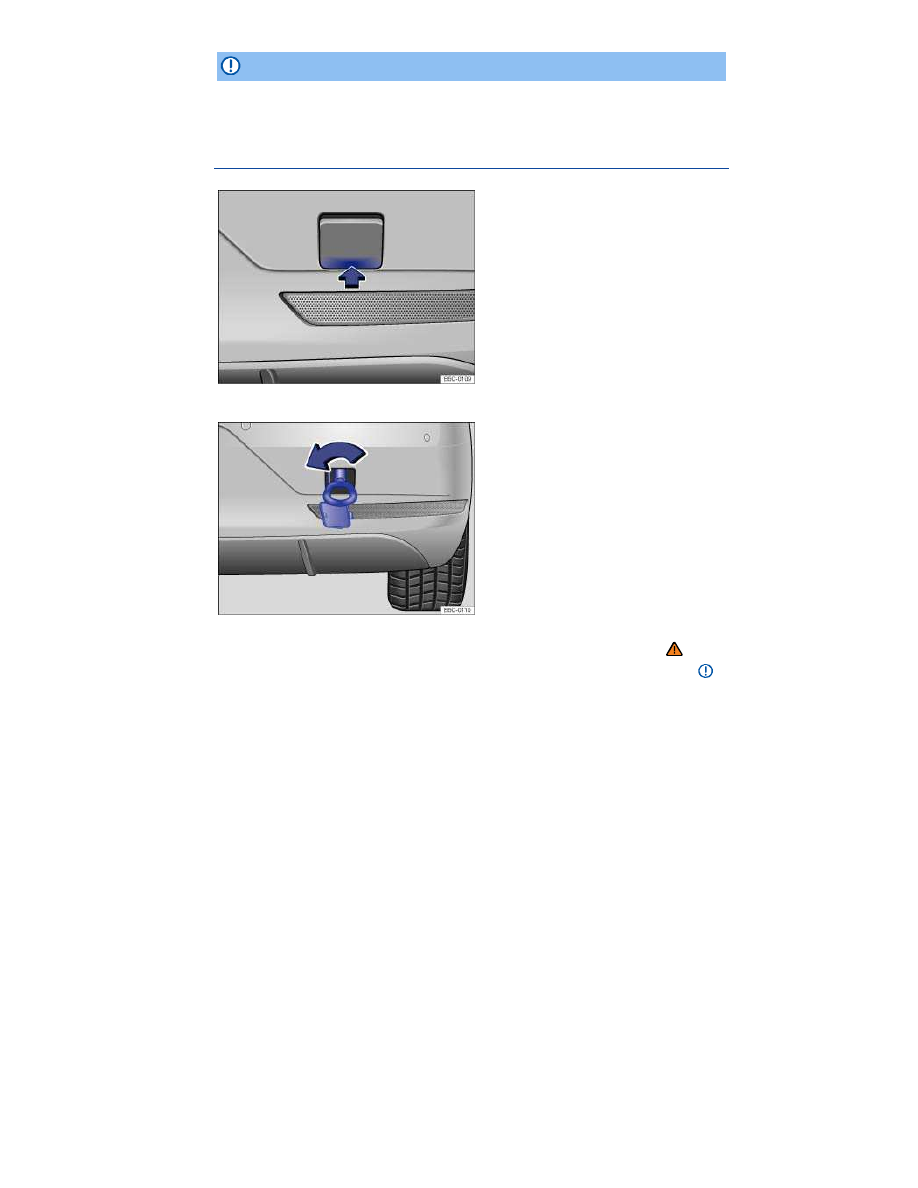Volkswagen Beetle Convertible (2015 year). Manual - part 25

NOTICE
Always make sure the towing eye is screwed all the way into threaded hole so that it is secure.
If not, it could be pulled out while your vehicle is being towed.
Installing the rear towing eye (Beetle R-Line)
Fig. 184 In the right rear bumper: Removing the cover.
Fig. 185 In the right rear bumper: Installing the towing eye.
Please first read and note the introductory information and heed the WARNINGS
There is a threaded hole for the towing eye in the right rear bumper behind a cover
⇒
fig. 185
,
⇒
.
Always keep the towing eye in the vehicle and stow it securely.
Follow the towing instructions
⇒ Tips on towing.
Installing the rear towing eye
Take the towing eye, the lug wrench, and the screwdriver out of the vehicle tool kit in the luggage
compartment
⇒ Vehicle tool kit.
Push on the cover at the lower area
⇒
fig. 184
(arrow) so that it pops out.
Remove the cover and let it hang from the bumper.